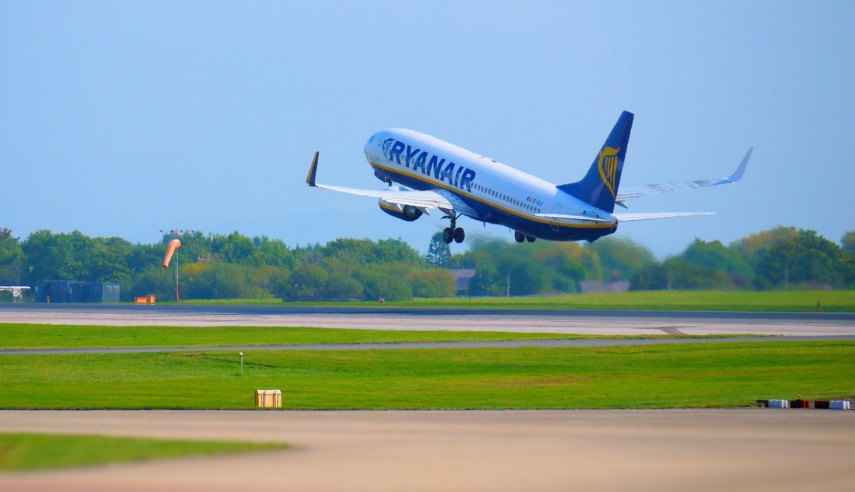Budget airline Ryanair has launched a corporate jet charter service. You could say I was surprised to hear this news. We all know that the terms “business class” and “fine dining” are not something we associate with Ryanair.
But the airline is offering just that (well, fine-dining is an optional extra). Using a remodelled Boeing-737, it offers 60 business-class seats for groups to hire via its dedicated email and phone number (no, online bookings are not possible). When you consider the market Ryanair is entering, there is every reason to believe its business plan for this new service will work.
The airline is targeting a particular segment of the high-end business travel market – medium to large group travel. The airline itself suggests that its product is perfect for corporate trips, sport teams, or simply groups of friends.
When you think of the private jet market, the typical picture is that of a small plane carrying a small team of high-level executives on business. The market catering for this is actually quite well-developed. There are at least five aircraft manufacturing companies active in the field (Bombardier, Cessna, Dassault, Embraer and Gulfstream) and Bombardier forecasts at least 9,000 business jet deliveries over the next ten years. Meanwhile, the business jet charter market is very fragmented, with no obvious leaders. So, in this sense, there is potential for Ryanair to establish itself.

The traditional corporate jet picture – a la Emirates. Roderick Eime, CC BY
The jets being produced by the likes of Bombardier are much smaller, however, than the Boeing-737 used by Ryanair. In fact, this is just a regular aircraft with a different interior. The typical Ryanair Boeing 737-800, which we are used to, accommodates 189 passengers in an all-economy configuration – three times as many as the corporate jet version.
Using an existing plane and changing its interiors is a smart move by Ryanair while it tests the waters of this market, as the inside of the plane is relatively easy to change. Delta Air Lines in the US, for example, reconfigures some of its narrow-body aircraft in the winter months to fly National Basketball Association teams during the season. In the summer months, the aircraft are turned back into their regular two-class passenger selves and fly scheduled commercial routes.
But the way that Ryanair have changed the interior of their Boeing-737 shows that they will not be competing with the high level of luxury provided by competitors like Emirates. With its 60 front facing seats, Ryanair is not targeting the small-group travel segment, thus differentiating itself from the many operators of smaller business jets.
No-frills luxury?
The important part for Ryanair will be securing clientele. Here its reputation can work either for or against it. On the downside, potential customers could transfer the conventionally accepted image of the Ryanair brand (a no-frills low-fare airline) to the high-end segment it is trying to enter. This could make Ryanair’s offer unattractive to some clients, who could otherwise be willing to pay premium price for the convenience a chartered flight provides.
On the other hand, Ryanair’s reputation for low-cost low-fare airline could mean the potential clients may think the airline’s corporate jet product might also be competitively priced. This will at least generate some phone calls, and may of course lead to bookings.
What is most important, however, is whether Ryanair will actually have the kind of cost advantage it enjoys over the network carriers in the regular passenger market. The airline achieves lower cost in large part by offering a cheaper “no-frills” product to its passengers.

Inside Ryanair’s private jet. Fintan Clarke/Ryanair
Compared to network carriers such as British Airways or KLM, Ryanair typically offers lower frequency of service, strictly point-to-point flights (which means a less complicated and not as expensive revenue management system and no need to worry about accommodating passengers missing their connections), no complementary in-flight services – the list goes on.
In the corporate travel market, Ryanair will have to offer service of comparable quality to its competitors’, which will potentially mean less of a cost advantage. Of course, we are talking about a very high-margin market segment here, which means that cost differences might not play as important a role as they do in the regular airline market.
It pays to note that chartering a jet is a much more involved process than paying for a normal flight. In this day and age, visiting one of many price comparison websites can give you a good idea of the available flight options and prices. But finding a business jet typically involves getting in touch with brokers, who call jet owners to confirm aircraft availability and obtain price quotes. Technological advances appear to have done little to fundamentally change this process. I assume, however, that Ryanair is ready to work in – and possibly disrupt – this environment.
Let us not forget that Ryanair played an important role in making air travel affordable and possible for millions of people who had never flown before. Could it be this same airline will do the same for corporate travel – will we see groups of people who would otherwise have flown on a regular flights chartering Ryanair’s Boeing for their next trip? Maybe, just maybe, flying Ryanair for a stag party will mean quite a different thing in the future.
 Volodymyr Bilotkach is affiliated with International Air Transport Association as an external instructor for its Training and Development Institute.
Volodymyr Bilotkach is affiliated with International Air Transport Association as an external instructor for its Training and Development Institute.
Volodymyr Bilotkach, Senior Lecturer in Economics, Newcastle University
This article was originally published on The Conversation. Read the original article.




 John Carreyrou Sues Major AI Firms Over Alleged Copyrighted Book Use in AI Training
John Carreyrou Sues Major AI Firms Over Alleged Copyrighted Book Use in AI Training  Mexico Antitrust Review of Viva Aerobus–Volaris Deal Signals Growth for Airline Sector
Mexico Antitrust Review of Viva Aerobus–Volaris Deal Signals Growth for Airline Sector  ByteDance Plans Massive AI Investment in 2026 to Close Gap With U.S. Tech Giants
ByteDance Plans Massive AI Investment in 2026 to Close Gap With U.S. Tech Giants  FDA Approves Mitapivat for Anemia in Thalassemia Patients
FDA Approves Mitapivat for Anemia in Thalassemia Patients  TSMC Honors Japanese Chip Equipment Makers With 2025 Supplier Awards
TSMC Honors Japanese Chip Equipment Makers With 2025 Supplier Awards  BlackRock-Backed Global Ports Deal Faces Uncertainty Amid Cosco Demands
BlackRock-Backed Global Ports Deal Faces Uncertainty Amid Cosco Demands  Global Demand for Yuan Loans and Bonds Surges as China Pushes Currency Internationalization
Global Demand for Yuan Loans and Bonds Surges as China Pushes Currency Internationalization  Nvidia to Acquire Groq in $20 Billion Deal to Boost AI Chip Dominance
Nvidia to Acquire Groq in $20 Billion Deal to Boost AI Chip Dominance  BP Nears $10 Billion Castrol Stake Sale to Stonepeak
BP Nears $10 Billion Castrol Stake Sale to Stonepeak  ETHUSD Defies ETF Outflows: Holds Above $3000, Bulls Eye $3200 Breakout
ETHUSD Defies ETF Outflows: Holds Above $3000, Bulls Eye $3200 Breakout 
































